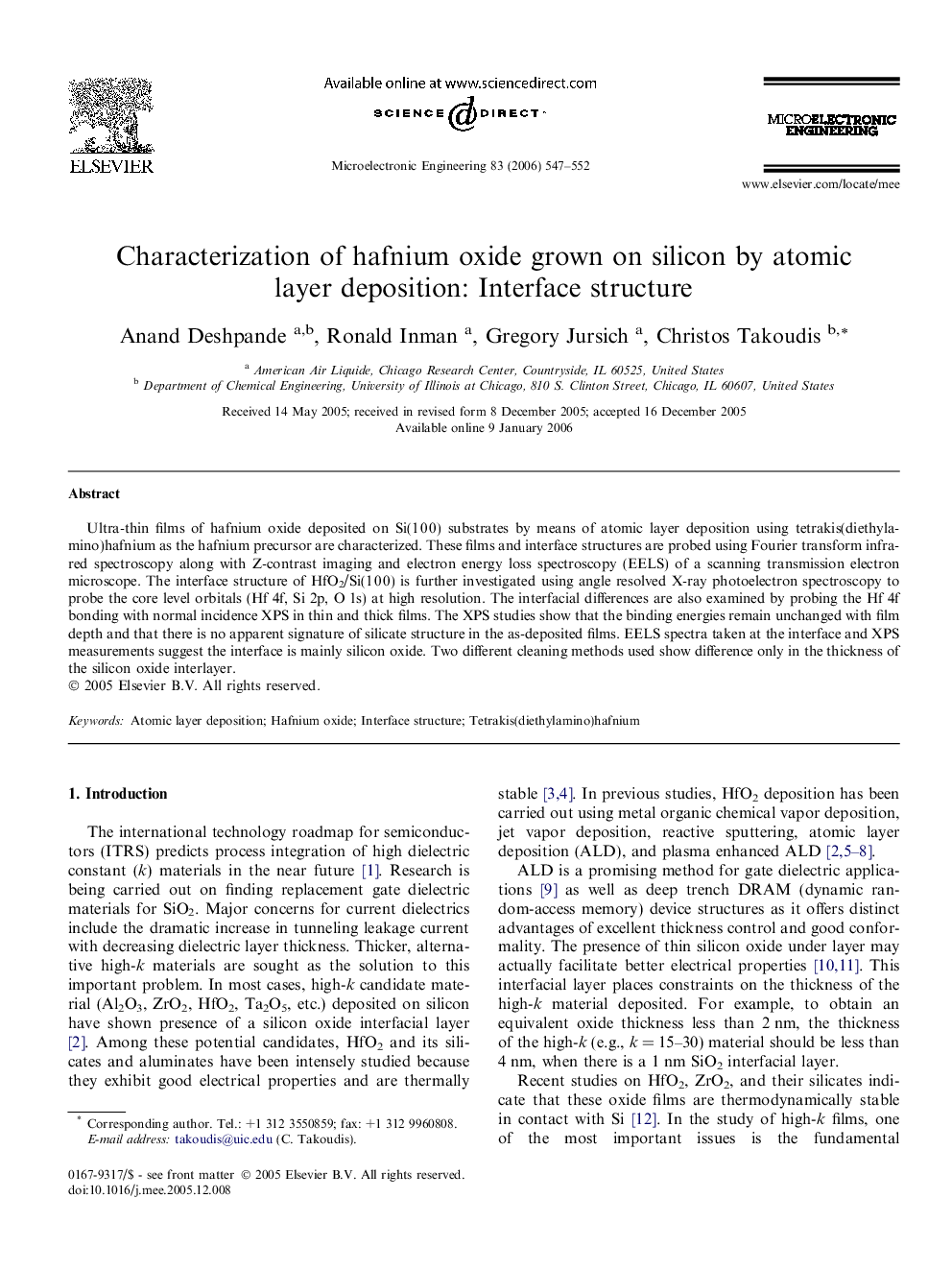| Article ID | Journal | Published Year | Pages | File Type |
|---|---|---|---|---|
| 545283 | Microelectronic Engineering | 2006 | 6 Pages |
Ultra-thin films of hafnium oxide deposited on Si(1 0 0) substrates by means of atomic layer deposition using tetrakis(diethylamino)hafnium as the hafnium precursor are characterized. These films and interface structures are probed using Fourier transform infrared spectroscopy along with Z-contrast imaging and electron energy loss spectroscopy (EELS) of a scanning transmission electron microscope. The interface structure of HfO2/Si(1 0 0) is further investigated using angle resolved X-ray photoelectron spectroscopy to probe the core level orbitals (Hf 4f, Si 2p, O 1s) at high resolution. The interfacial differences are also examined by probing the Hf 4f bonding with normal incidence XPS in thin and thick films. The XPS studies show that the binding energies remain unchanged with film depth and that there is no apparent signature of silicate structure in the as-deposited films. EELS spectra taken at the interface and XPS measurements suggest the interface is mainly silicon oxide. Two different cleaning methods used show difference only in the thickness of the silicon oxide interlayer.
